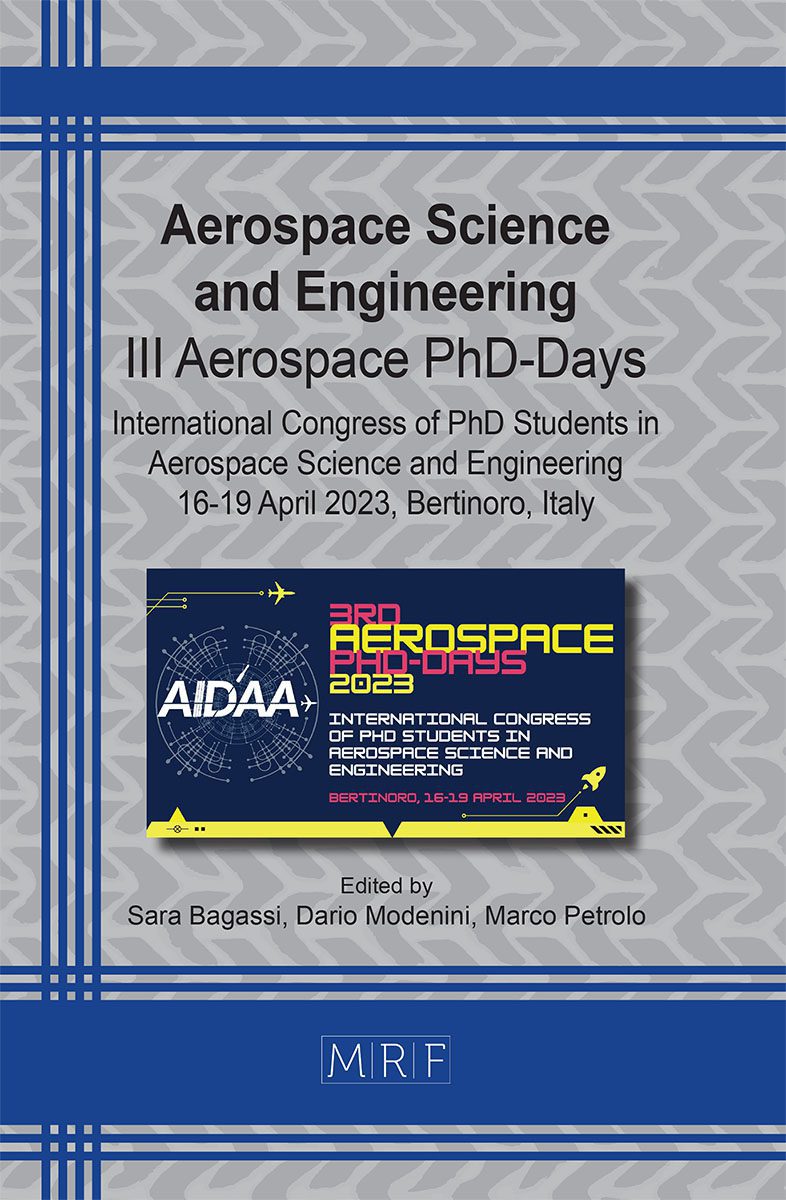Simulation of flow field characteristics in gap between high-speed rocket sled slipper and track
Tianjiao Dang, Zhen Liu, Pierangelo Masarati
download PDFAbstract. Accurate simulation of flow field characteristics within the gap between the slipper and track is essential for the prevention of aerodynamic heat damage to high-speed rocket sleds. A three-dimensional structured mesh was utilized to establish the flow field model in the slipper-track gap, while computational fluid dynamics was employed for simulating the flow field movement. The results revealed that the bow shock wave at the head of the rocket sled has a significant influence on the flow field characteristics within the gap. Specifically, the velocity of the mainstream in the gap initially exhibited an increasing trend, followed by a decreasing trend, and then a re-increase. Conversely, the mainstream temperature displayed a decreasing trend initially, followed by an increasing trend, and then a decrease once more. The air compression within the slipper-track gap resulted in remarkably high temperatures, with the maximum temperature reaching 1160 K at Ma = 4 in the immediate vicinity of the slipper. The current investigation provides valuable insights that can guide future research on the structural characteristics of slippers in high-temperature environments.
Keywords
Gap Flow Field, Computational Fluid Dynamics, Aerodynamics, Supersonic
Published online 9/1/2023, 7 pages
Copyright © 2023 by the author(s)
Published under license by Materials Research Forum LLC., Millersville PA, USA
Citation: Tianjiao Dang, Zhen Liu, Pierangelo Masarati, Simulation of flow field characteristics in gap between high-speed rocket sled slipper and track, Materials Research Proceedings, Vol. 33, pp 369-375, 2023
DOI: https://doi.org/10.21741/9781644902677-54
The article was published as article 54 of the book Aerospace Science and Engineering
![]() Content from this work may be used under the terms of the Creative Commons Attribution 3.0 license. Any further distribution of this work must maintain attribution to the author(s) and the title of the work, journal citation and DOI.
Content from this work may be used under the terms of the Creative Commons Attribution 3.0 license. Any further distribution of this work must maintain attribution to the author(s) and the title of the work, journal citation and DOI.
References
[1] Dang T, Liu Z, and Zhou X, et al, Dynamic response of a hypersonic rocket sled considering friction and wear, Journal of Spacecraft and Rockets. 59 (2022) 1289-1303. https://doi.org/10.2514/1.A35267
[2] Cinnamon John D., and Anthony N. Palazotto, Analysis and simulation of hypervelocity gouging impacts for a high speed sled test, International Journal of Impact Engineering. 36 (2009) 254-262. https://doi.org/10.1016/j.ijimpeng.2007.11.009
[3] Dang T, Li B, and Hu D, et al, Aerodynamic design optimization of a hypersonic rocket sled deflector using the free-form deformation technique, Proceedings of the Institution of Mechanical Engineers, Part G: Journal of Aerospace Engineering. 235 (2021) 2240-2248. https://doi.org/10.1177/09544100221075071
[4] Szmerekovsky Andrew G., and Anthony N. Palazotto, Structural dynamic considerations for a hydrocode analysis of hypervelocity test sled impacts, AIAA Journal. 44 (2006) 1350-1359. https://doi.org/10.2514/1.13803
[5] Korkegi Robert H., and Ronald A. Briggs, On compressible turbulent-plane Couette flow, AIAA Journal. 6 (1968) 742-744. https://doi.org/10.2514/3.4583
[6] Korkegi Robert H., and Ronald A. Briggs, Compressible turbulent plane Couette flow with variable wall temperature, Aerospace research labs Wright-Patterson AFB Ohio, 1970. https://apps.dtic.mil/sti/citations/AD0708162
[7] Korkegi Robert H., and Ronald A. Briggs, The hypersonic slipper bearing-A test track problem, Journal of Spacecraft and Rockets. 6 (1969) 210-212. https://doi.org/10.2514/3.29570
[8] Korkegi R. H., and R. A. Briggs, Compressible turbulent plane Couette flow with variable heat transfer based on von Karman model, AIAA Journal. 8 (1970) 817-819. https://doi.org/10.2514/3.5767
[9] Lofthouse A., M. Hughson, and A. Palazotto, Hypersonic test sled external flow field investigation using computational fluid dynamics, 40th AIAA Aerospace Sciences Meeting & Exhibit, 2002. https://doi.org/10.2514/6.2002-306
[10] Alban Christopher J, Thermal and melt wear characterization of materials in sliding contact at high speed, Air Force Institute of Technology, Wright-Patterson AFB Ohio, Graduate school of engineering and management, 2014. https://apps.dtic.mil/sti/citations/ADA599170
[11] Roe Philip L, Approximate Riemann solvers, parameter vectors, and difference schemes, Journal of computational physics. 43 (1981) 357-372. https://doi.org/10.1016/0021-9991(81)90128-5
[12] Ansys® ICEM CFD, Release 2020 R1, help system, ANSYS, Inc.
[13] Ansys® Fluent, Release 2020 R1, help system, ANSYS, Inc.































